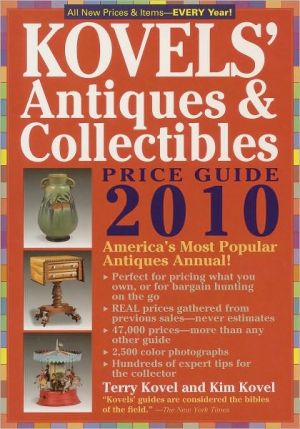Auction Theory
Vijay Krishna’s 2e of Auction Theory improves upon his 2002 bestseller with a new chapter on package and position auctions as well as end-of-chapter questions and chapter notes. Complete proofs and new material about collusion complement Krishna’s ability to reveal the basic facts of each theory in a style that is clear, concise, and easy to follow. With the addition of a solutions manual and other teaching aids, the 2e continues to serve as the doorway to relevant theory for most students...
Search in google:
Vijay Krishna’s Second Edition of Auction Theory improves upon his 2002 best seller with a new chapter on package and position auctions as well as end-of-chapter questions and chapter notes. Complete proofs and new material about collusion complement Krishna’s ability to reveal the basic facts of each theory in a style that is clear, concise, and easy to follow. With the addition of a solutions manual and other teaching aids, the Second Edition continues to serve as the doorway to relevant theory for most students doing empirical work on auctions.BooknewsIn this complete evaluation of auction theory, Krishna (economics, Pennsylvania State U., University Park) covers the situations where a single object is sold; theory of auctions with private values; the revenue equivalence principle; the adjustments to the principle required by asymmetries, risk aversion, and budge constraints; mechanism design with private values; a model with interdependent values and affiliated signals; the revenue ranking principle; efficiency properties of English auction; mechanism design with interdependent values; and collusive behavior and bidding cartels. The second half of the book is devoted to the description and modeling of multiple object auctions. Annotation c. Book News, Inc., Portland, OR (booknews.com)
Section I: Single Object Auctions Private Value Auctions: A First Look The Revenue Equivalence Principle Qualifications and Extensions Mechanism Design Auctions with Interdependent Values The Revenue Ranking ("Linkage") Principle Asymmetries and Other Complications Efficiency and the English Auction Mechanism Design with Interdependent Values Bidding Rings Section II: Multiple Object Auctions An Introduction to Multiple Object Auctions Equilibrium and Efficiency with Private Values Some Revenue Considerations Sequential Sales Nonidentical Objects Multiple Objects and Interdependent Values Section III: Appendices A: Continuous Distributions B: Stochastic Orders C: Order Statistics D: Affiliated Random Variables E: Some Linear Algebra F: Games of Incomplete Information G: Existence of Equilibrium in First-Price Auctions References Index
\ From the Publisher"Krishna’s superb Auction Theory is an ideal text and reference because his clear and precise exposition distills the vast literature and provides excellent motivation, examples, exercises, and connections to commercial applications."\ Robert B. Wilson, Stanford University\ "On its publication in 2002, Vijay Krishna's book immediately became a central reference in auction theory. But the subject has continued to develop, and so we're very fortunate that Krishna has now updated the text."\ Eric Maskin, Institute for Advanced Study, Nobel Laureate in Economics\ \ \ \ \ \ BooknewsIn this complete evaluation of auction theory, Krishna (economics, Pennsylvania State U., University Park) covers the situations where a single object is sold; theory of auctions with private values; the revenue equivalence principle; the adjustments to the principle required by asymmetries, risk aversion, and budge constraints; mechanism design with private values; a model with interdependent values and affiliated signals; the revenue ranking principle; efficiency properties of English auction; mechanism design with interdependent values; and collusive behavior and bidding cartels. The second half of the book is devoted to the description and modeling of multiple object auctions. Annotation c. Book News, Inc., Portland, OR (booknews.com)\ \








